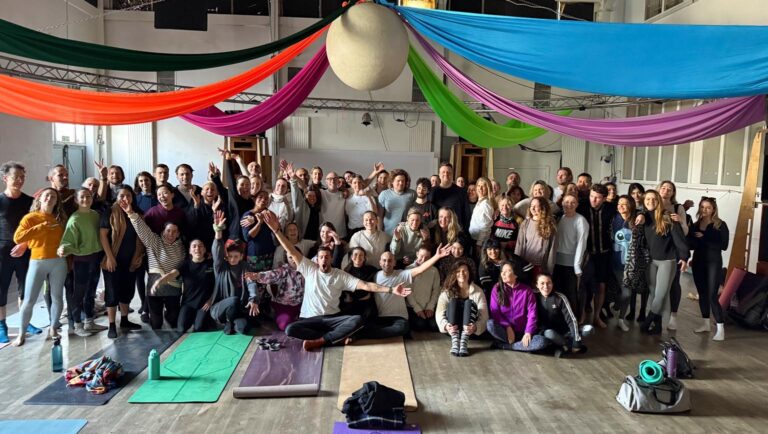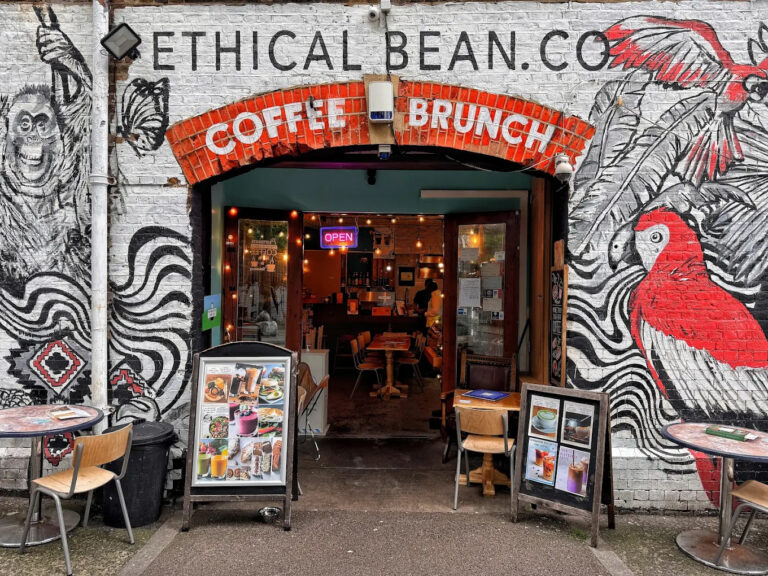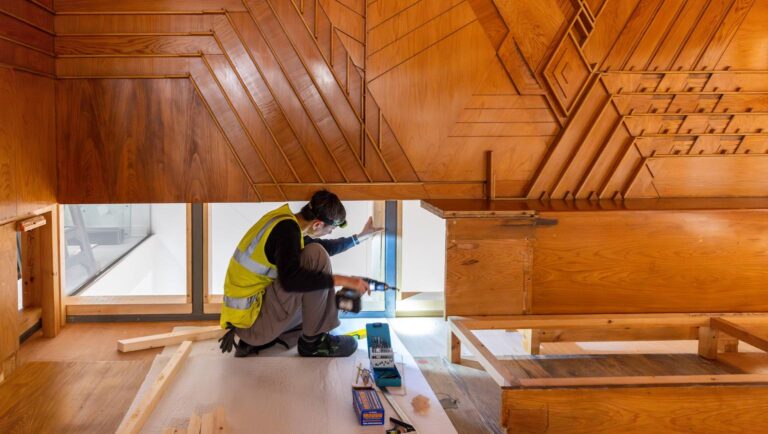
Mattia from Community Yoga Project on the joy of human connection
Exploring the health advantages of belonging to something bigger than ourselves
It’s simple to get mail delivered to Vittoria Wharf, although it’s often one of the first things people are surprised by. The industrial architecture and layout of ‘Blackgates’, or just “the yard” as it is colloquially known, is more akin to a maze than a block of flats.
Indeed, a conversation that always comes up between residents of warehouses is of trying to piece together the DIY patchwork of divisions, walls, and doors that carve up these massive 19th century brick buildings, naming each with a quixotic set of numbers.
As an urban planner, I’ve long been interested in space; how neighbourhoods and the built form can facilitate and shape social interactions. Living in a warehouse not only teaches you about urban community, but also makes you think about space, movement, people, and the opportunities which the three facilitate.
Most warehouses consist of 5-15 rooms clustered around central large common spaces, which are arranged around shared yards, like Blackgates. Many people in London rarely get to know their neighbours; but I know who lived in my room before me from the stories, furniture, and painted walls; they’ve left their mark on the space.
Before my tenure, Dalston’s Cola (now Dalston’s) started up in the industrial kitchen next to my unit. For Duncan O’Brien, one of the founders, the main draw was affordability. “Because space is obviously so expensive in London, we had to find a place to get started,” he says.
The company was housed in the unit for three years, during which O’Brien had the opportunity to get to know the community living in the broader Hackney Wick area. “You’d see some fantastic performances, great music and a good social scene,” he continues, adding that an advantage of being in a communal space was connection to a casual labour pool. “There’s a guy who just did a stop motion animation for us who we met through a contact of our neighbours at the print studio.”
Nonetheless, O’Brien emphasizes that the building was “well past its life”, and the conditions in the space at the time were certainly not up to code. Dalston’s has since moved on to a larger office in Farringdon.

Across the hallway from the kitchen they once occupied, my housemate Tommy Wallwork has run a nondescript music studio since 2014. You wouldn’t know from the industrial blue carpeting and plain white walls that Wallwork produces some of the hottest up-and coming artists in London.
In many ways, the quality of talent in the studio is what colours the space. He works with labels such as XL Recordings and Young, and runs his own electronic music imprint, Nervous Horizon. Tommy’s artists are a motley crew of drill rappers, R&B singers, techno producers, and countless other characters.
Among the many interesting people that appear in our kitchen and deck at various hours of the night, the South London skate-punk musicians have blended in the best. It’s also clear that Marley Rutherford, who performs under the name Mrley is their de-facto leader. His general affability and effortless cool composure explains a lot of his charisma – and why he’s becoming so successful. The first time I met Mrley he pulled me out of the River Lea, laughing at the fact that I’d arrived at what would be my future home on a rubber dingy.
Last week, when the fire alarm went off (a recurring false alarm) and we evacuated the unit, I finally managed to sit down with him. In many ways, these effortless interactions are what make work life in the warehouses unique. “I realised if I’m catching breath outside the studio, I’m in someone else’s kitchen. You’re not gonna stand in someone’s kitchen and not say hello,” says Mrley, who has now moved to Hackney Wick and picked up shifts at Doh bakery.
Signed to XL records and having released his EP Love You London last year, his shows bring large mosh pits, stage dives, and electric energy. Following in the punk tradition of political music and rebellion, he often talks about “this shit government.”
Nonetheless, London as a concept features prominently. “There’s a reason why so many people want to come here to start a life,” he says. “You can actually create something. It’s like real humanity.” That’s what attracts him to the Wick as well. “Here, no one’s gonna bother you. It’s very free, and that definitely plays out in the way we make music.”
A few years before Wallwork opened his studio, Nuha Ruby Ra had recently moved in next door. Ra, who has been living in Unit 18 for almost 10 years, has seen the area change again and again. For her, living in the Wick showed her a more human side of London. “You could just walk into someone’s unit down the road and ask them to borrow a drill and it’s fine. We all share our resources in some ways, and that’s a really rare thing to come by living in London.”
More generally, Ra reflects that The Wick is “a place that nurtures people.” An experimental pop artist, Ra has played with international bands like King Gizzard and the Lizard Wizards, and at this year’s Glastonbury.
Her housemate Andrew serves as her tour manager, and she has played shows with residents of her unit and its diaspora. She’s weary, however, of the emerging trend of seeing Hackney Wick as a “place for business” rather than as a space for organic community; something which she expects to only get worse. “I want to give people the opportunities that this place gave me,” Ra explains.

Among those residents of the warehouses which have made a name for themselves in the arts, Ra’s former housemate Daisy Tortuga credits living in Vittoria Wharf as being responsible for starting her career as a rugmaker. She has since moved elsewhere in Hackney Wick, but reflects that “warehouse living definitely influenced me a lot. I think it gave me a lot of ambition, and it was really nice to be around a lot of people that wanted to see others doing creative stuff, too.”
Tortuga, who has made bulk orders for brands such as Nando’s and Adidas, and has done solo shows in London and Malmo, shows the spatial and social benefits of community living.
Architect Matthew Beck, who lives on the other side of the neighbourhood, agrees. “I moved to Oslo House, and I knew every single neighbour in two months.” Both the space and the network that he found in the Wick were responsible for his biggest professional achievement: building and designing his own space. “I can’t really put into words how impactful that was as a creative, a designer and as an architect. It’s something that I don’t think would be possible almost in any other place in the world.”
Beck especially emphasises that his neighbours helped him to build the unit and lent him tools, as well as giving him secondhand materials to use. His experience has allowed him to reconceptualise his practice. “The biggest change is that I’ve developed a knowledge of construction,” he says, “so I can now design and build spaces myself, which for some reason is completely unheard of.”
In contrast to new builds, which Beck claims are not built to last and a lot of materials are wasted in the process, warehouses are “largely built by the people who live in them. They’re sustainable because they use upcycled materials.”
Beck would like to see principles of sustainable design incorporated into 21st century London architecture. By empowering people to build and design their own spaces “you really enable a much greater appreciation of designing and building on potentially a mass scale.”
Of course, there are countless environmental drawbacks to warehouse living; the old buildings are hard to heat and organising services like recycling can be difficult. But beyond Beck’s professional experience, many aspects of the model can serve as an inspiration for a more sustainable built-environment.
The experiences of these five young folks only scratch the surface of the economic, social, and environmental benefits of community-led housing. For young businesses like Matthew Beck Design and Dalston’s, access to cheap space allows them to spend more on developing other aspects of their practice. For Nuha Ruby Ra and Daisy Tortuga, living in an intentional community pushed them to be more creative and gave them the opportunity to develop their skills, trades, and practices.
Access to large amounts of space has allowed many young bands and creators like Mrley, to experiment without the constraints of London’s small spaces. And finally, the ability to rely on neighbours for tools and upcycled materials leads to less waste and maximizes resources; something which raises the bar of sustainability.
There’s a lot to learn from Hackney Wick’s warehouses, both as a borough, a city, and a wider culture. We could start to experiment with new forms of housing which encourage socializing; we could build more common areas in buildings where residents, whether families, young people, or the elderly, can get to know, help, and rely on each other.
We could look to remodel older existing structures instead of tearing them down to build new flats. But most urgently, we could stop dismissing the warehouses and the organic neighbourhood community life that forms there as secondary.
We could start focusing on the spillover benefits which they bring residents as an inspiration; as models for how to create healthier cities, people, and communities.

Exploring the health advantages of belonging to something bigger than ourselves

Your timely reminder to go visit these amazing restaurants, bars and cafes this summer while we wait for better bridge access…

The twist and turns of post-Olympics decision-making that brought 250,000 objects to Here East
A joint venture in collaborative local media from:


In partnership with

Regulated by IMRESSS, the Independent Monitor for the Press CIC.
For more info on our complaints policy, or to make a complaint, visit FAQ.
